2024年度
联合国教科文组织亚太遗产保护奖
2024 UNESCO Asia-Pacific Awards for Cultural Heritage Conservation
古南街历史街区保护项目
Gunan Street Historic Block Conservation Project
杰出项目奖
Award of Distinction
可持续发展特别表彰奖
Special Recognition for Sustainable Development
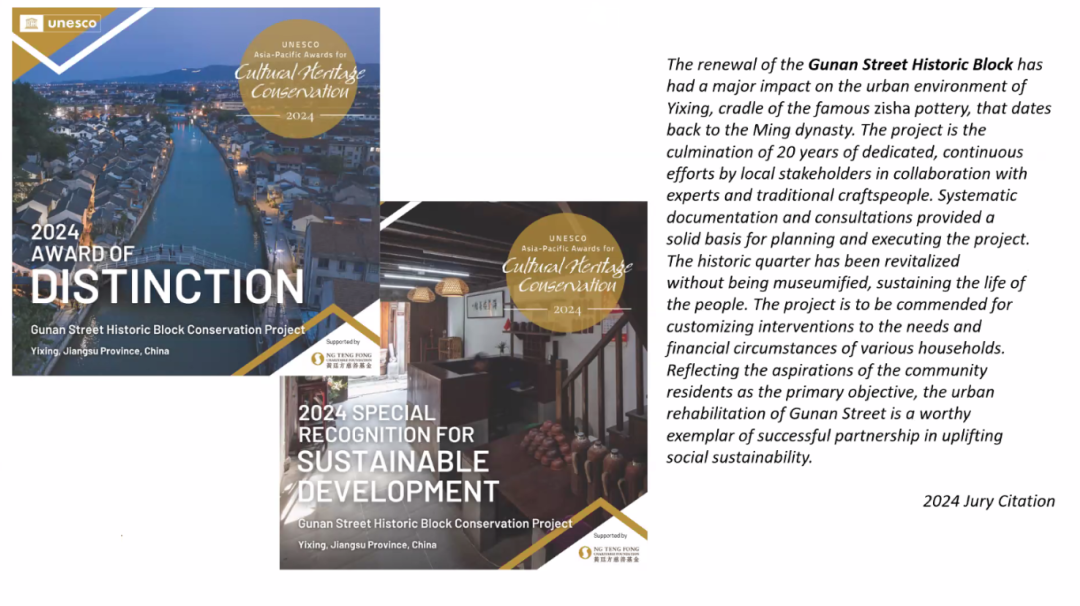
评语
宜兴是中国著名的紫砂陶瓷产业的发源地,古南街聚落的历史可以追溯至明代。蜀山古南街历史文化街区的保护与更新是一项对宜兴的城市环境产生重大影响的项目。该项目是由专业人员、当地传统手工艺人和相关参与者长期合作,经过20年来不懈努力的一个结晶。系统的历史资料整理和调研协商为项目的规划和最终执行提供了坚实的基础。该项目因根据不同居民的需求和财务状况量身定制的干预措施而受到赞扬,使得历史街区在没有被博物馆化的情况下得到了振兴,当地居民传统的生活模式因此得以保留。古南街的保护与更新工作以反映社区居民的愿望为首要目标,是提升社会可持续性的合作关系的成功典范。
The renewal of the Gunan Street Historic Block has had a major impact on the urban environment of Yixing, cradle of the famous zisha pottery, that dates back to the Ming dynasty. The project is the culmination of 20 years of dedicated, continuous efforts by local stakeholders in collaboration with experts and traditional craftspeople. Systematic documentation and consultations provided a solid basis for planning and executing the project. The historic quarter has been revitalized without being museumified, sustaining the life of the people. The project is to be commended for customizing interventions to the needs and financial circumstances of various households. Reflecting the aspirations of the community residents as the primary objective, the urban rehabilitation of Gunan Street is a worthy exemplar of successful partnership in uplifting social sustainability.
申报单位:东南大学建筑学院+丁蜀镇政府
项目负责人:王建国,陈薇,伍震球
主持建筑师:王建国
建筑设计团队:
唐芃,沈旸,鲍莉,李海清,朱渊,俞海洋,李新建,王笑,李家翔,刘奕秋
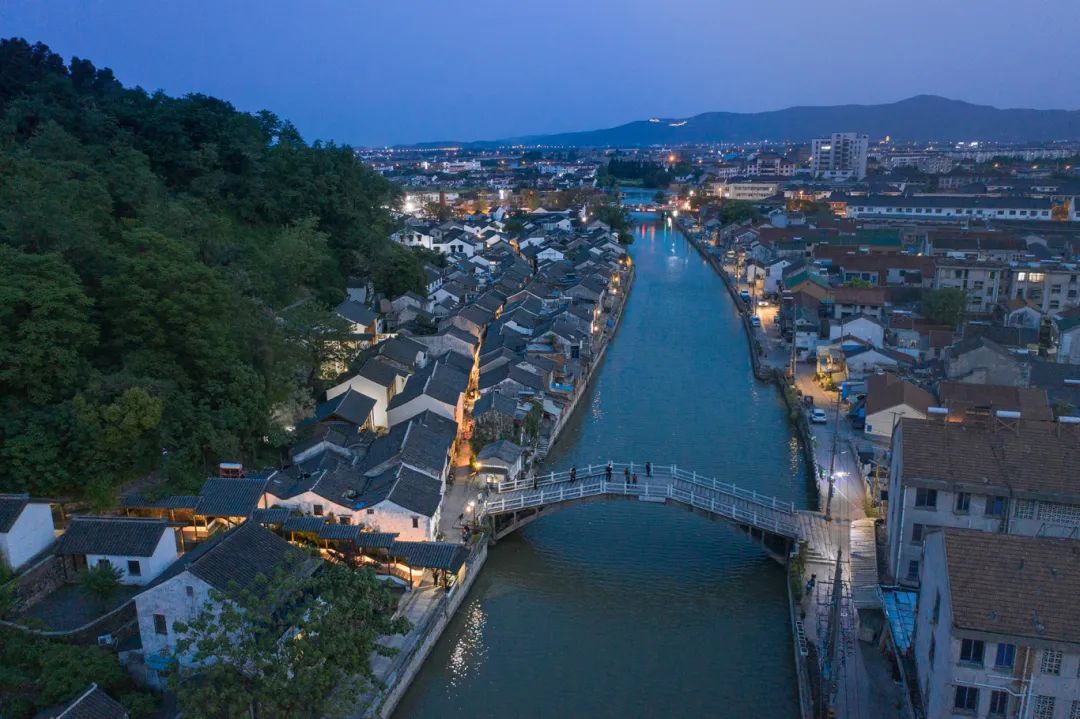
古南街总体鸟瞰
Aerial view of Gunan Street Historic Block
古南街项目介绍
蜀山古南街历史文化街区位于宜兴市丁蜀镇,是宜兴现存最为完整的明清古街道。古南街原长近千米,现约400米,宽2.4-3.4米。街道建筑多为1-2层楼砖木结构的商业店面,风貌形态保存基本完好,具有依山傍水、生活生产一体化的独特性。古南街是宜兴紫砂文化的发源地和传承地,本身即是一部紫砂发展历程的浓缩历史。由于历史原因,街区房屋年久失修、破败残缺、设施落后,已无法满足现代生产需求——古南街失去传统魅力的同时,也面临居民改善生活品质的压力。
Shushan Gu'nan Street Historical and Cultural Block, located in Dingshu Town, Yixing City, is the most well-conserved ancient street since the Ming and Qing Dynasties in Yixing. Originally, the street was almost 1 km long and is now about 400 m long and 2.4 to 3.4 m wide. The buildings in the neighborhood are mainly brick-and-wood structures of one to two stores. At the same time, the street-facing storefronts have largely maintained their original appearance, showcasing the unique integration of lives and livelihoods by the mountains and rivers. Meanwhile, it serves as a crucial cradle and heritage site for Yixing Zisha (purple clay) culture, bearing a condensed history of development.However, due to the long history, the buildings in the area have fallen into disrepair, characterized by dilapidated and outdated facilities that no longer meet modern lives and production needs. Not only has the area lost its traditional charm, but the significant pressure to improve the quality of life for residents has also decreased.

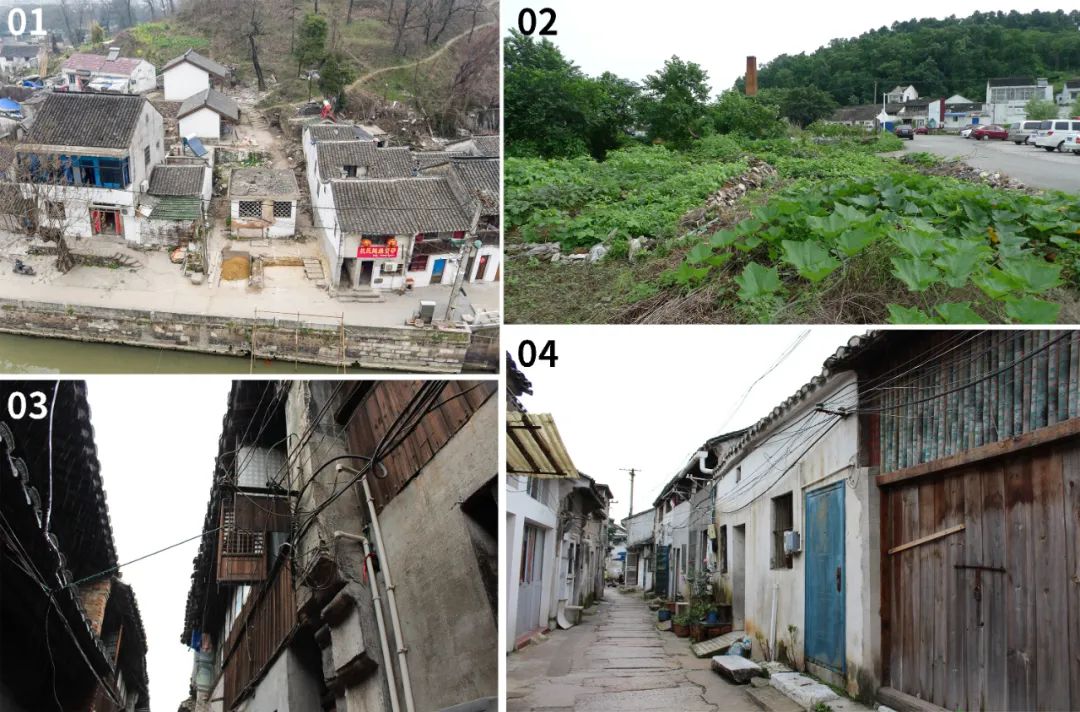
古南街改造前的状态
The condition before the renovation of the block
东南大学建筑学院的设计团队,在古南街进行了20年的持续研究。2004年和2011年,二度编制完成“宜兴蜀山古南街历史文化街区保护规划”。该规划明确了将山水形态、紫砂文化融于历史街区、历史建筑和形态架构的载体中的规划策略;明确了保护山水环境格局、街巷系统的传统布局,保护“河绕山转、街随山走、河街并行”空间格局的规划理念。规划强调对一街(古南街)、二轴(蜀山大桥通往山上、桥廊通往龙窑遗址)、三界面(沿河、街道两侧)、三区(街区、南端入口广场区、北端旅游服务区)的结构性保护。规划保护的内容包括:“山-窑-街-河”以及“四区八点一环”的空间格局保护;古南街等重点风貌区的建筑立面、街道、河道等环境风貌的保护;作为生产和贸易场所的紫砂陶器行、反映紫砂发展历史过程的北厂和名人故居、代表工业生产的烟囱等紫砂文化遗产的保护;建筑分级保护和分类整治等。经历近10年的调查研究和保护规划是古南街整治和改善的开端。
The Southeast University School of Architecture design team has conducted 20 years of continuous research on Gu'nan Street. In 2004 and 2011, Professor Chen Wei led the completion of the “Yixing Shushan Gunan Street Historical and Cultural District Protection Plan” twice. The Plan confirms the construction strategy of integrating the natural landscape and zisha culture into the historic block and the form and structure of the historic buildings. Protect the spatial layout of the natural environment and street system, with a planning concept of “the river encircling the mountain, the street following the mountain, and the river and the street stretching in parallel”. The conservation plan focuses on the structural protection of one street (Gu’nan Street), two axes (the Shushan Bridge leading to the mountain and the corridor bridge leading to the dragon kiln site), three interfaces (along the river, the sides of the street), and three key areas (the block itself, the entrance plaza at the southern end, and the tourist service area at the northern end). The conservation plan covers: the protection of the spatial patterns of “Mountain-Kiln-Street-River” and “Four Zones, Eight Points, and One Ring”; The conservation of the architectural facades, streets, and river environments of key scenic areas; the preservation of the industrial ecological chain of zisha cultural heritages, symbolized as the Zisha Pottery Shops, Beichang, the former residences of notable figures, and industrial chimneys; The implementation of graded preservation and categorized restoration of buildings. The first decade of investigation and planning laid the foundation for the restoration and improvement of Gu’nan Street.
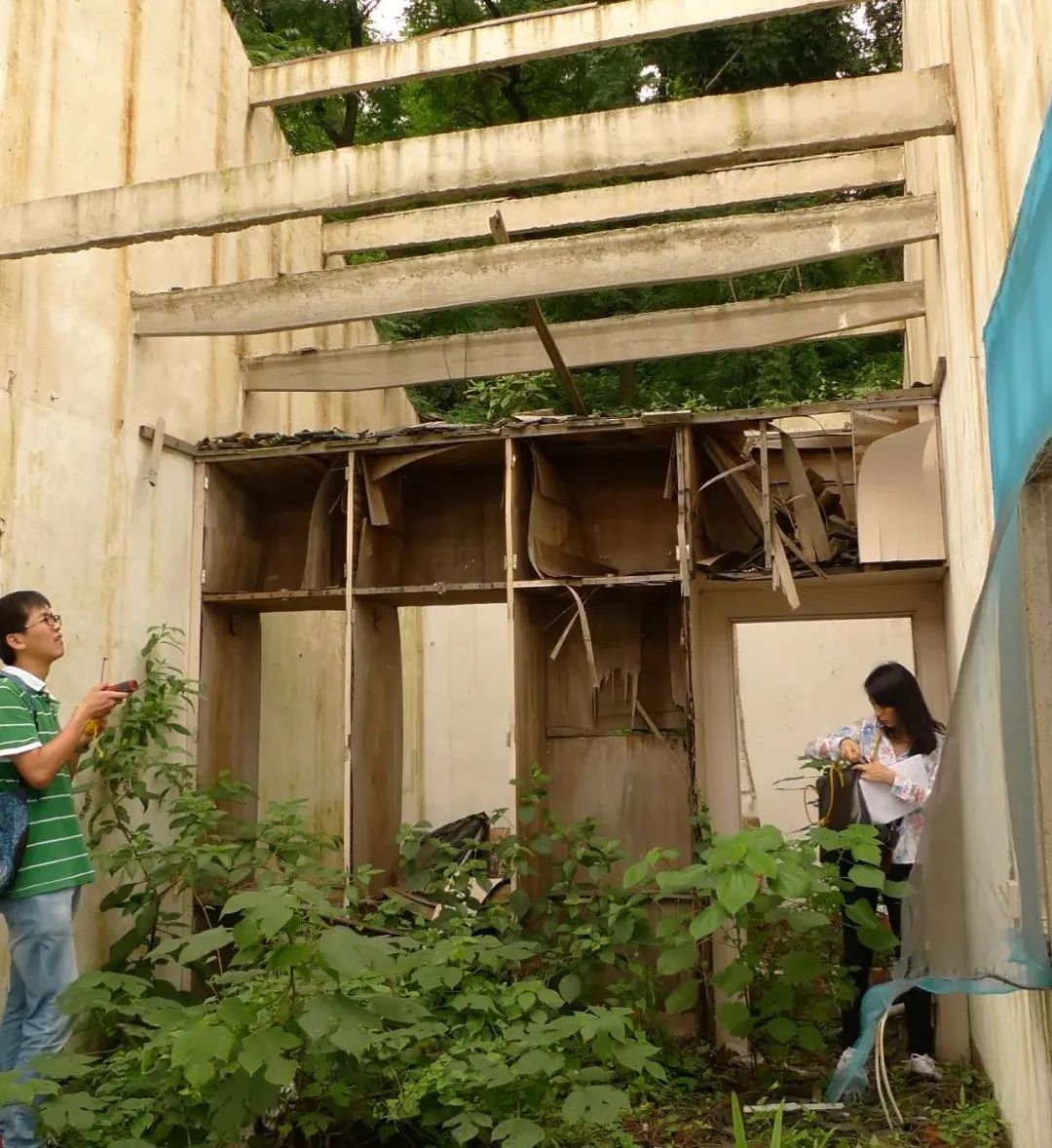
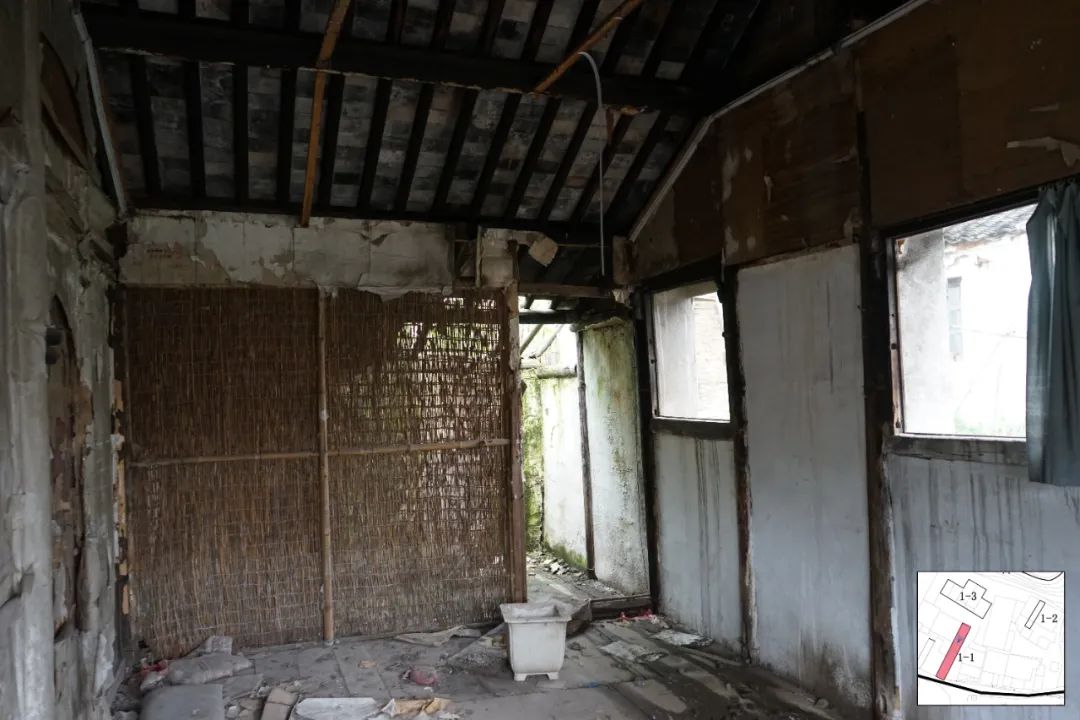
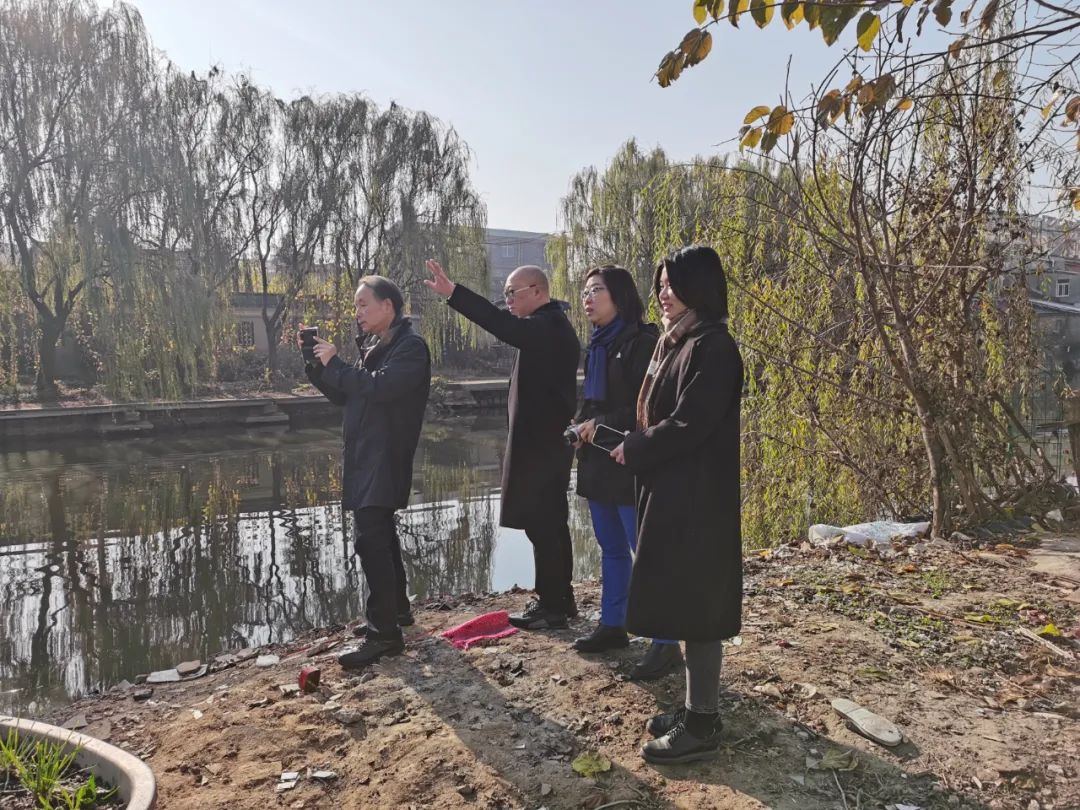
设计团队的现场调查研究
The investigation and research by the design teamThe planning and design methods to various street segments
以示范工程带动自主更新是古南街保护与更新工作的一大亮点。街区的民居大多数属于私房,尚有大量原住民生活其中,街区的改造与再利用不应该采用一体化整治或大面积拆建的改造方式。2018年起,设计团队坚持小规模,渐进式的建筑改造和创作理念,贯彻原真性、完整性和适应性活态利用相结合的原则,首选公房和关键节点作为示范工程进行设计与建造,共完成10处示范工程。主要包括入口广场,张家老宅(功能:游客中心),蜀山展厅(功能:居民可以自由使用的展厅),得义楼茶馆(功能:茶馆兼小型剧场),水龙宫便民设施(功能:公共活动空间、公厕),曼生廊和T字房(功能:公共活动空间、餐饮)等。
Driving independent renewal through demonstration projects is a major highlight of Gu Nan Street. The majority of residential buildings in the block were private houses, owned by many local residents. The renovation and reuse of the block could not adopt a unified renovation or large-scale demolition and reconstruction approach. Since 2018, our team has adhered to a small-scale, gradual renovation and creation concept, implementing principles of authenticity, integrity, and adaption. We selected 10 public buildings and key nodes as demonstration projects for planning and construction. The main areas included in the comprehensive protection cover the entrance plaza, Zhang’s Former Residence (function: visitor center), Shushan Exhibition Hall (function: a free exhibition hall for residents), Deyi Building Tea House (function: a tea house and a small theater), Shuilong Palace Convenience Facility (function: public activity space, a public toilet), Mansheng Corridor and T-shaped House (function: public activity space, dining).
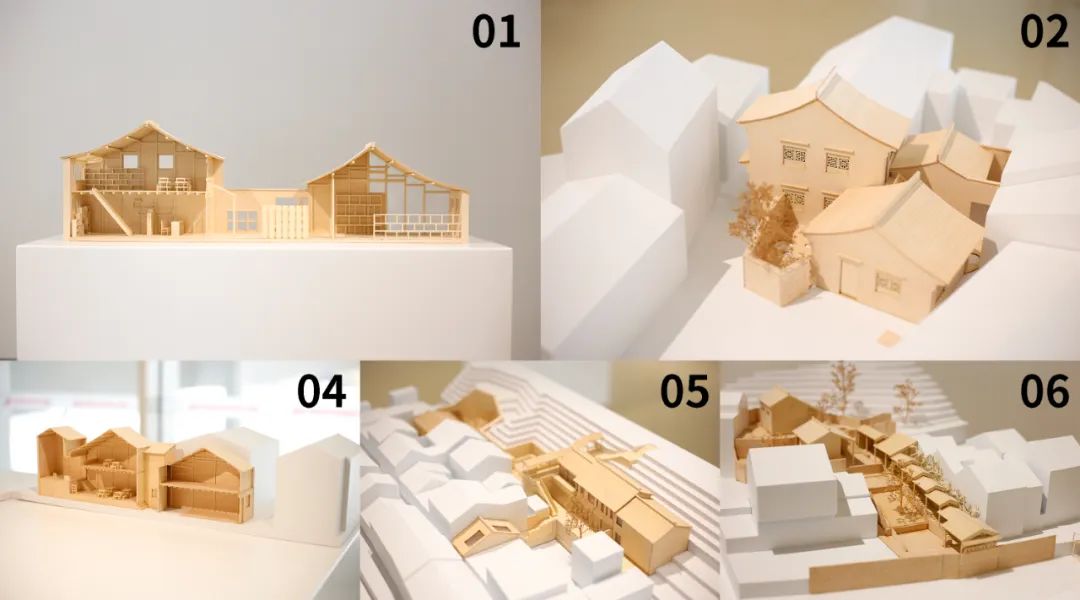
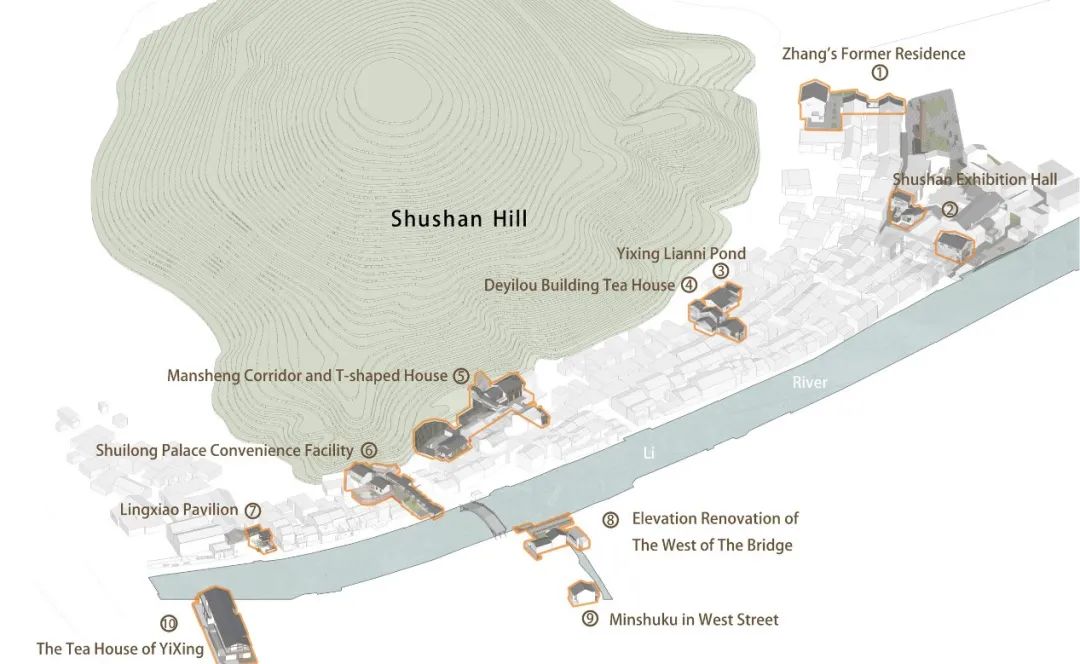
五个重要的示范工程及其在街区中的位置
5 key demonstration projects and the locations in the street
示范工程所在的位置是已经收归公有的建筑及其周边有限的场地。这些项目对既有的建筑进行更新改造并赋予新的功能,给予街区公共性创造性的功能空间带动街区的活力,同时又不破坏与其相邻的建筑的结构和持续使用的可能。示范工程的建成对居民的自发改造具有示范效应。同时通过导则引导,菜单式构件展陈和听证会,让居民了解保护与改造的细节,也以此带动了居民自发有序地开展自有房屋的修缮工作。
The demonstration projects are located in publicly-owned buildings and their limited surrounding areas. These projects update and transform existing buildings, endowing them with new functions and providing creative public spaces to drive the vitality of the block, while not damaging the structure and potential for sustainable use of adjacent buildings. Their completion will serve as a model for local residents' renovations. By providing guidelines, menu-style component exhibitions, and public hearings, we inform residents of the details of conservation and renovation, thereby encouraging residents to voluntarily and orderly repair their own homes.

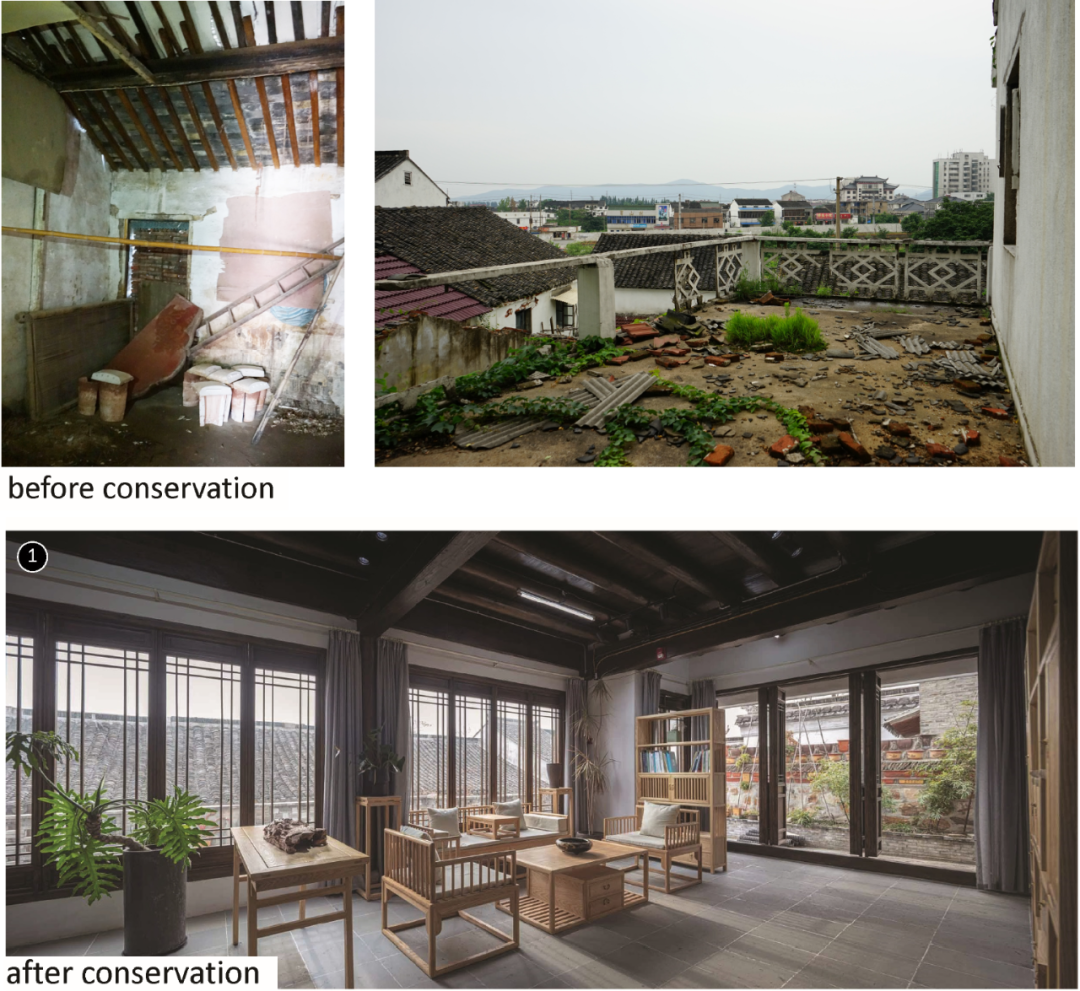

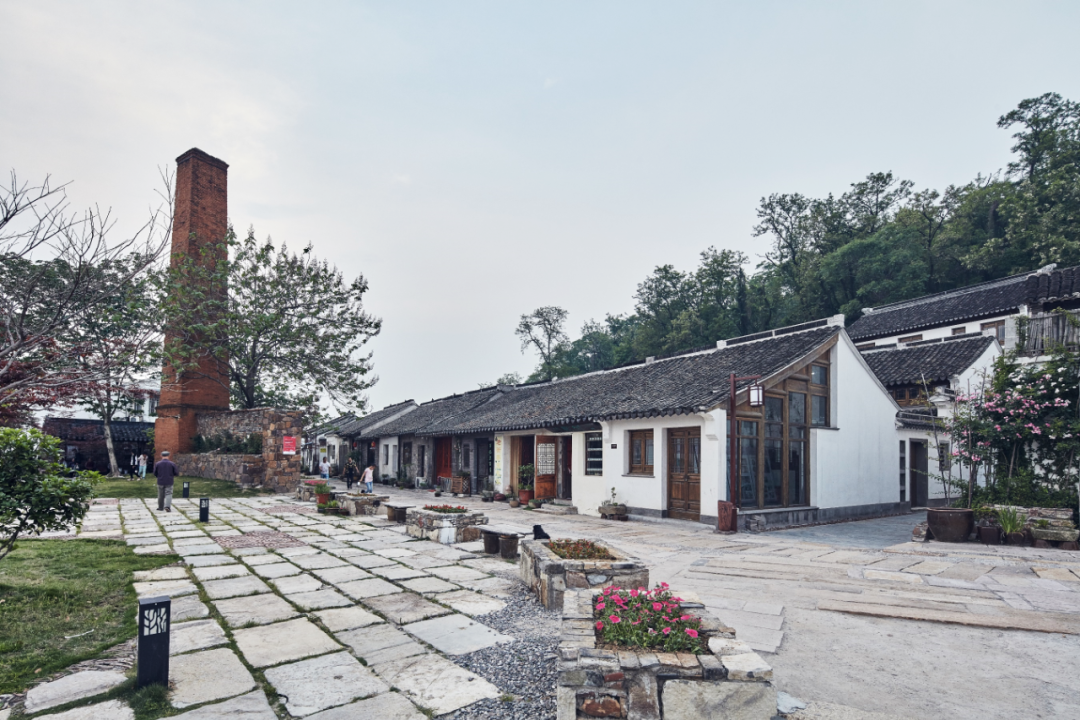
张家老宅改造过程及改造前后对比
Zhang's Former Residence before and after the conservation
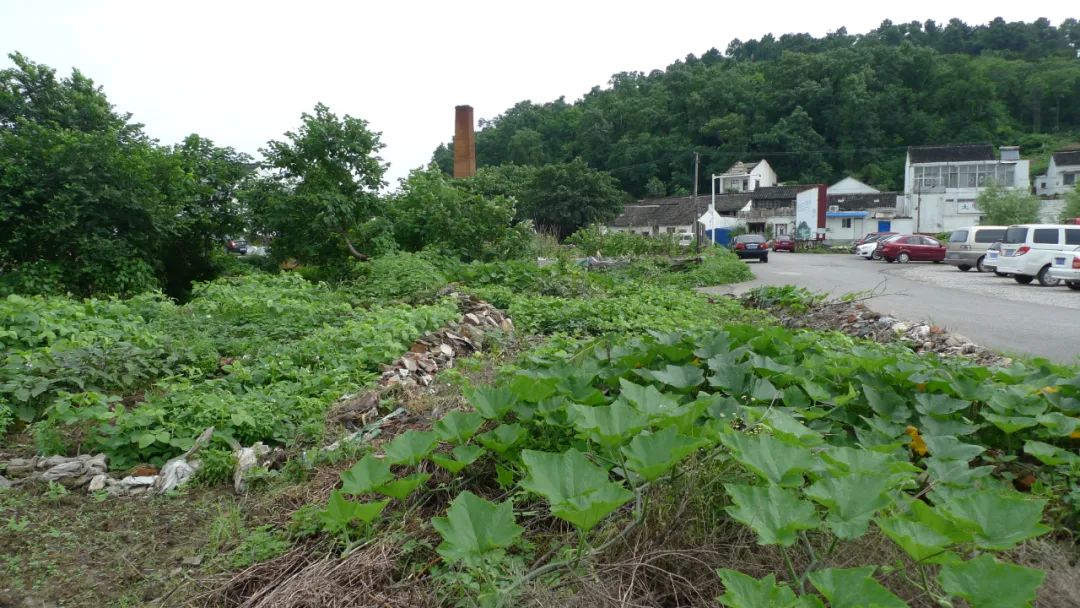
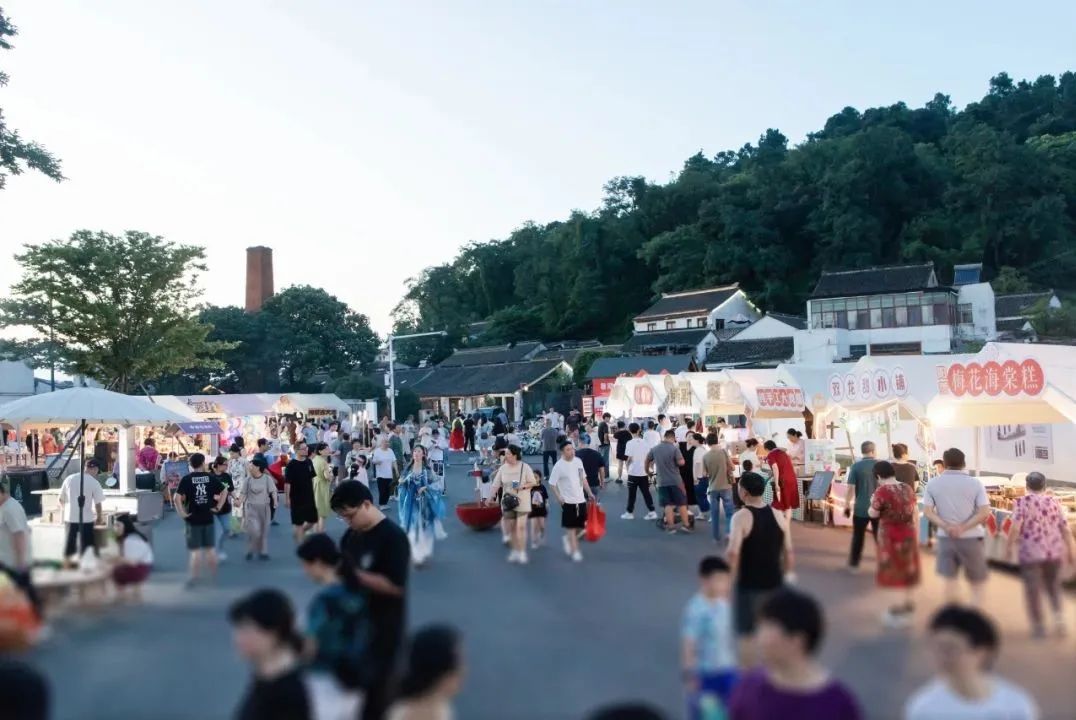
入口广场改造前后
Entrance square before and after the conservation

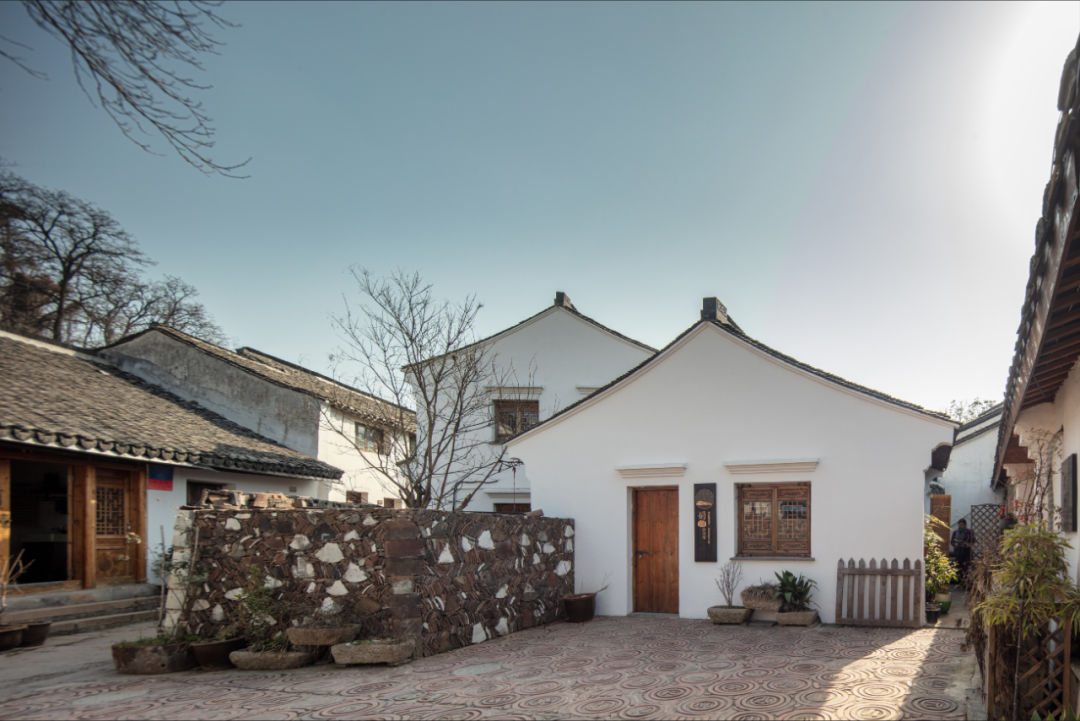
蜀山展厅改造后
Shushan Exhibition Hall after the conservation
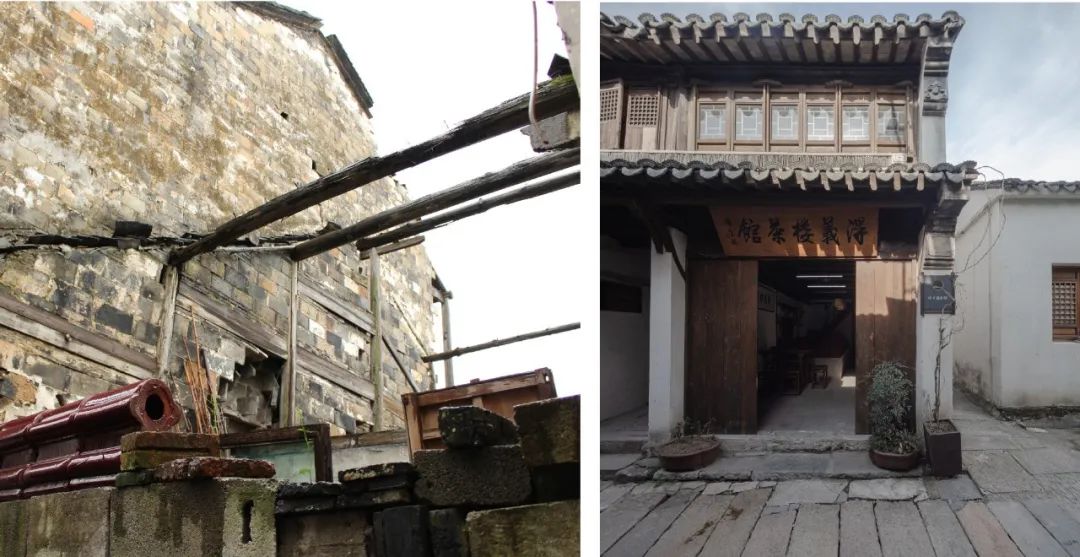
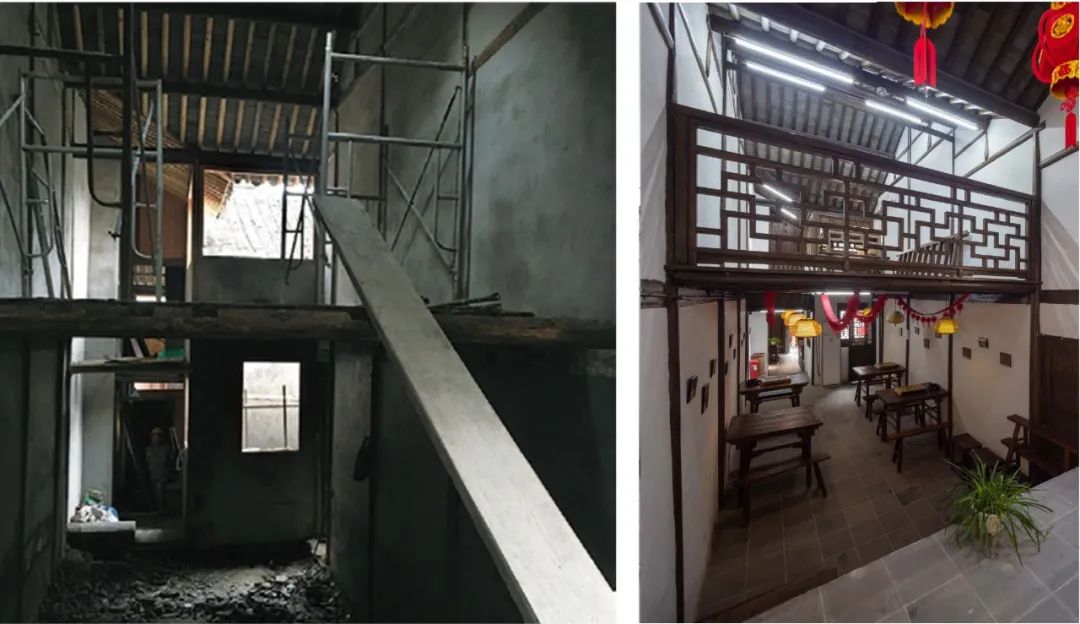
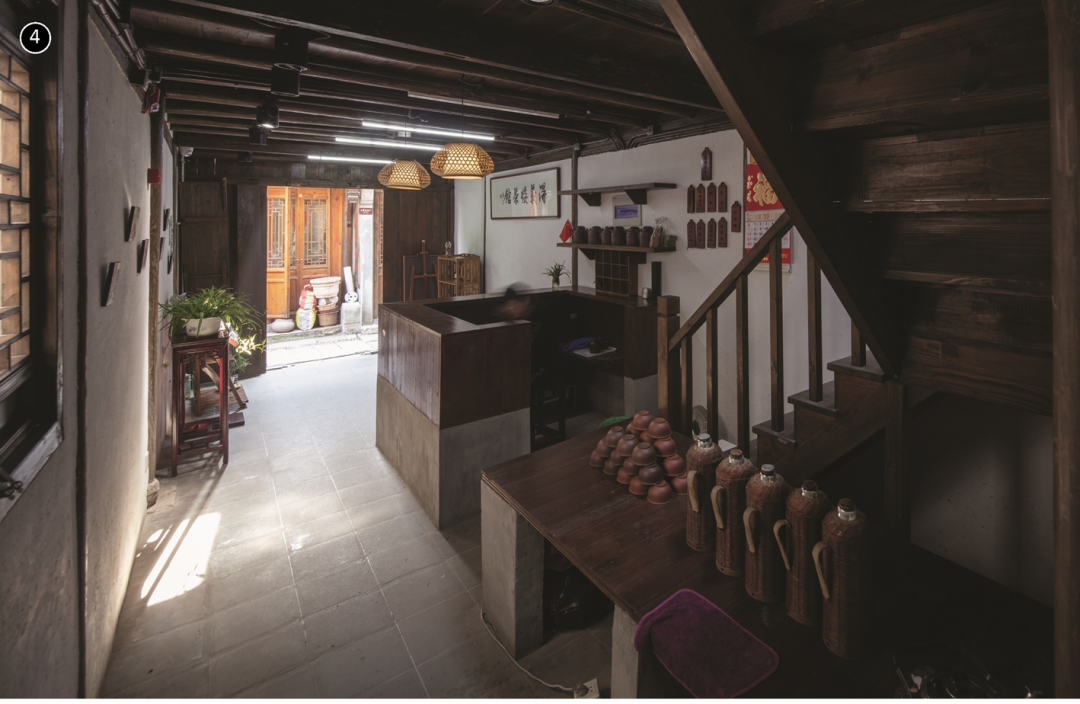
得义楼茶馆改造前后
Deyilou Tea House before and after the conservation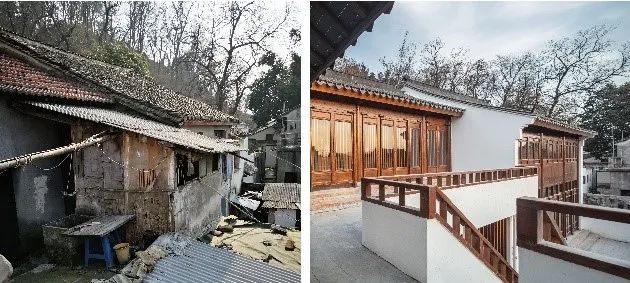
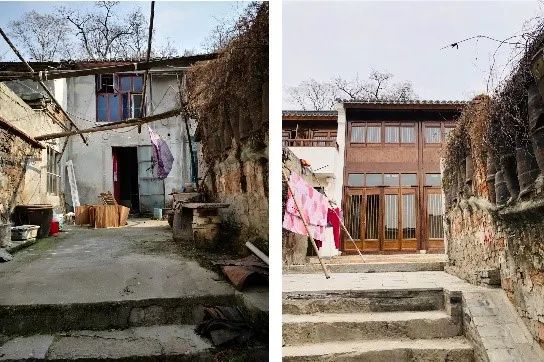
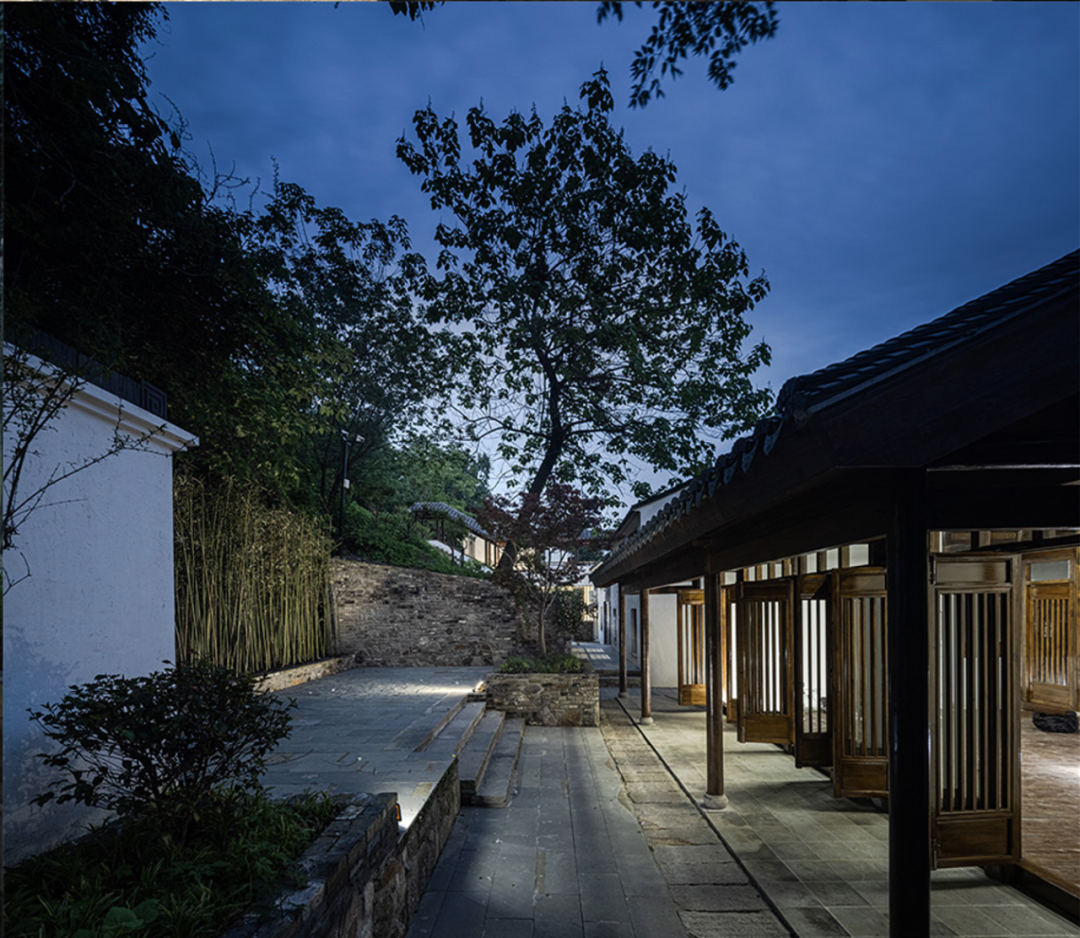
曼生廊和T字房改造前后
Mansheng Corridor and T House before and after the conservation

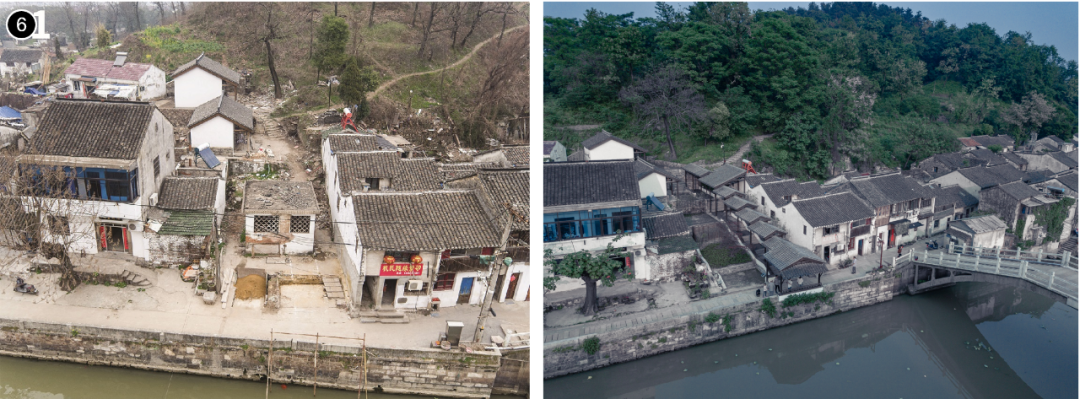
水龙宫改造前后
Shuilong Palace Convenience Facility before and after the conservation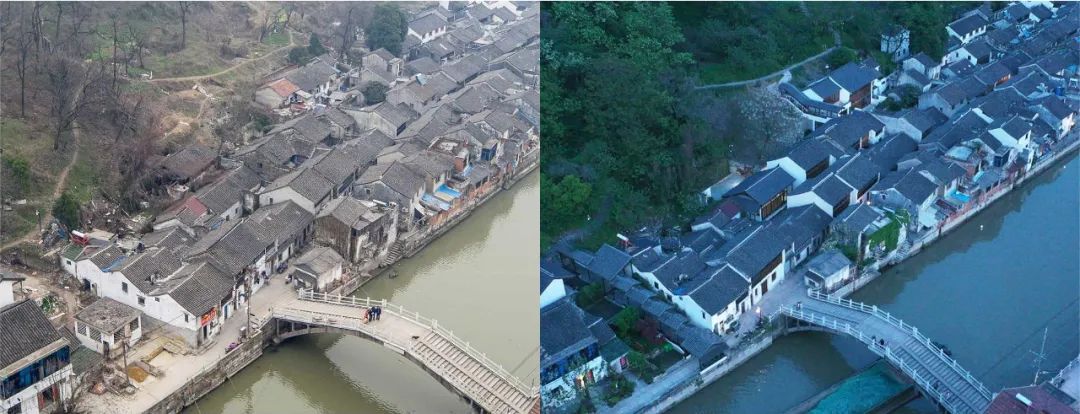
街区整体面貌的改变(2012-2021)
Overview of the Demonstration projects before and after the conservation(2012-2021)
结合国家科技部的古建聚落研究课题,团队将研发的一系列创新技术应用于古南街的保护、整治和改造,起到了显著的效果。
In conjunction with research projects of ancient settlements from the Ministry of Science and Technology, the team has applied a series of innovative technologies to the protection, renovation, and restoration of Gu’nan Street, achieving significant results.
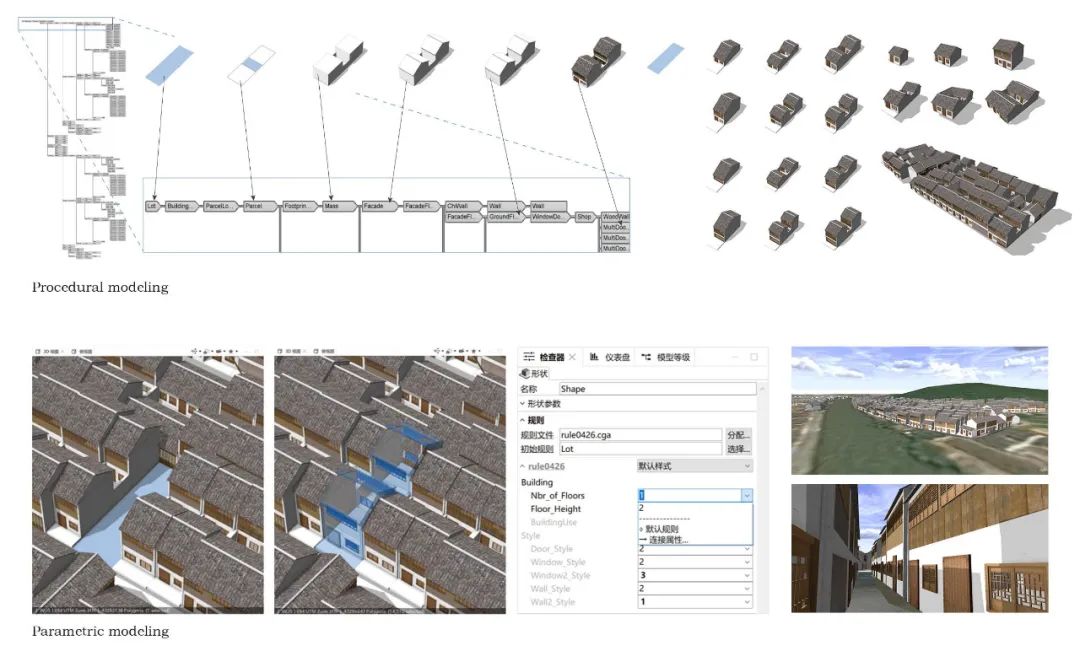
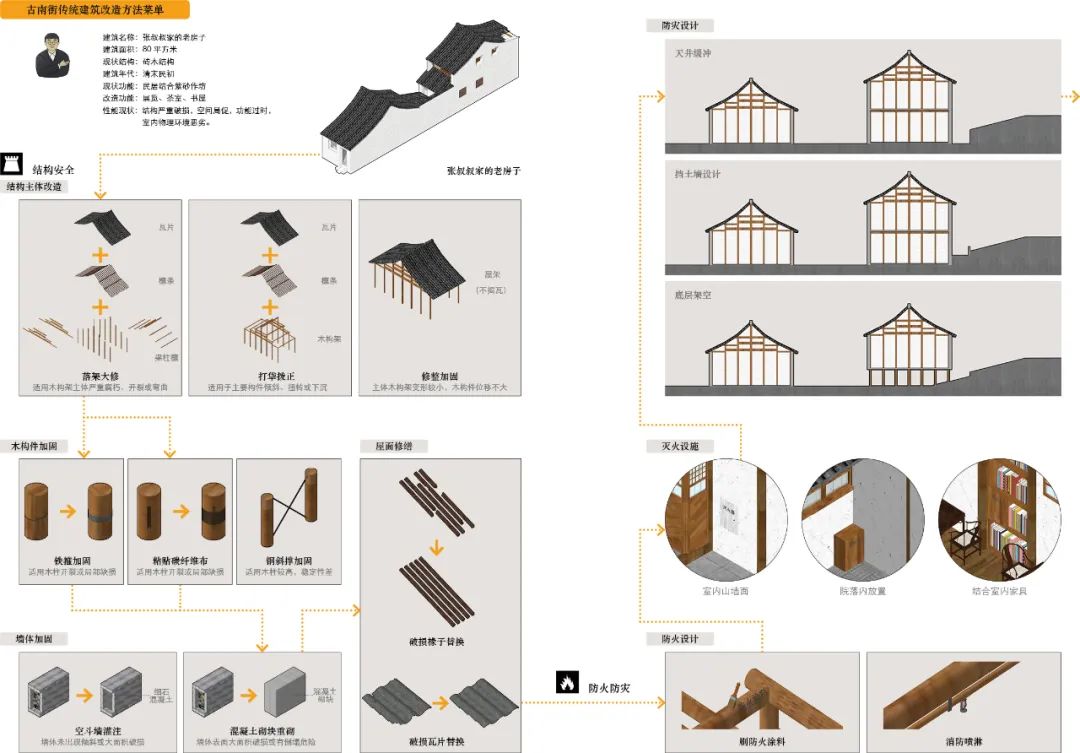
保护更新中的部分新技术应用
Application of some new technologies in the conservation
本项目持续了近20年,团队始终坚持小规模、渐进式的改造和创作理念,贯彻原真性、完整性和适应性活态利用相结合的原则。在示范工程引领,关注联体共生结构安全性,民居建筑功能与性能提升,数字技术方法在导则的制定与设计中的应用等方面有独特的创新。这些方法事关中国优秀传统建筑文化传承和“乡愁记忆”的身份认同,符合当前世界范围内建筑遗产保护和再利用前沿发展的国际潮流,在中国乃至亚洲都具有示范和引领作用。
This project has lasted for nearly 20 years, during which the team has adhered to the concept of small-scale and gradual renovation and creation, and implemented the principles of authenticity, integrity, and adaptive living utilization. The team has implemented unique innovations in various areas such as spearheading demonstration projects, prioritizing the safety of symbiotic structures, enhancing the functions and performances of residential buildings, and utilizing digital technology in the formulation and design of guidelines. All these methods are closely related to the inheritance of excellent traditional Chinese architectural culture and the identity recognition of “nostalgic memories”. They conform to the international trend of cutting-edge development in the conservation and reuse of architectural heritage worldwide and play a demonstrative and leading role in China and even Asia.

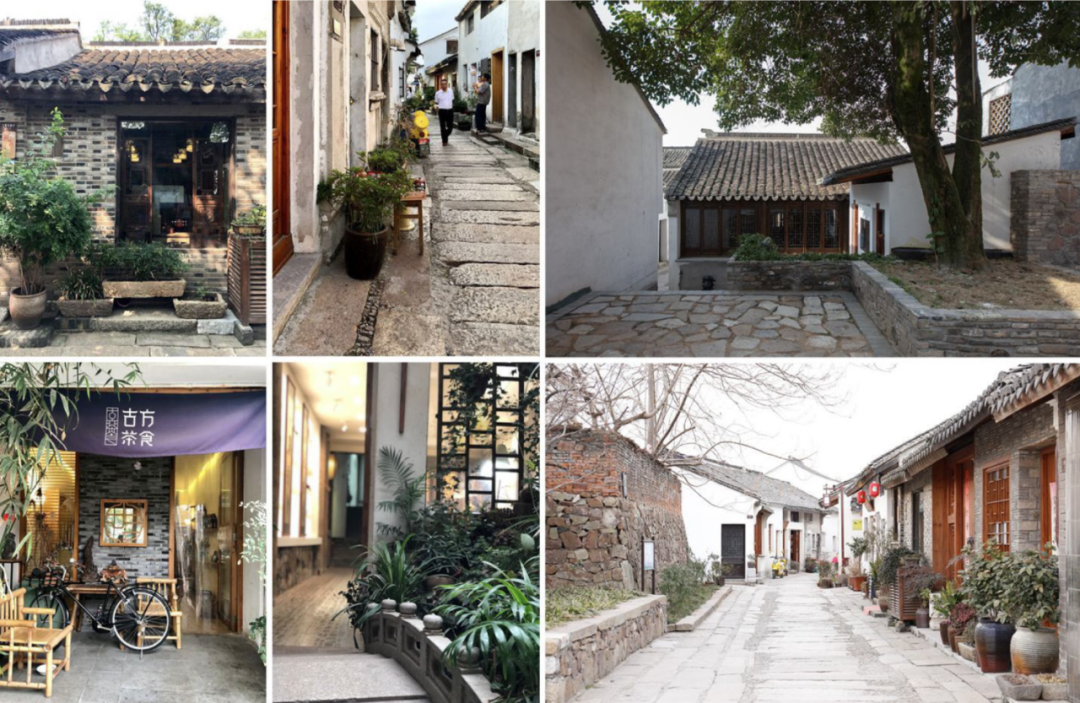
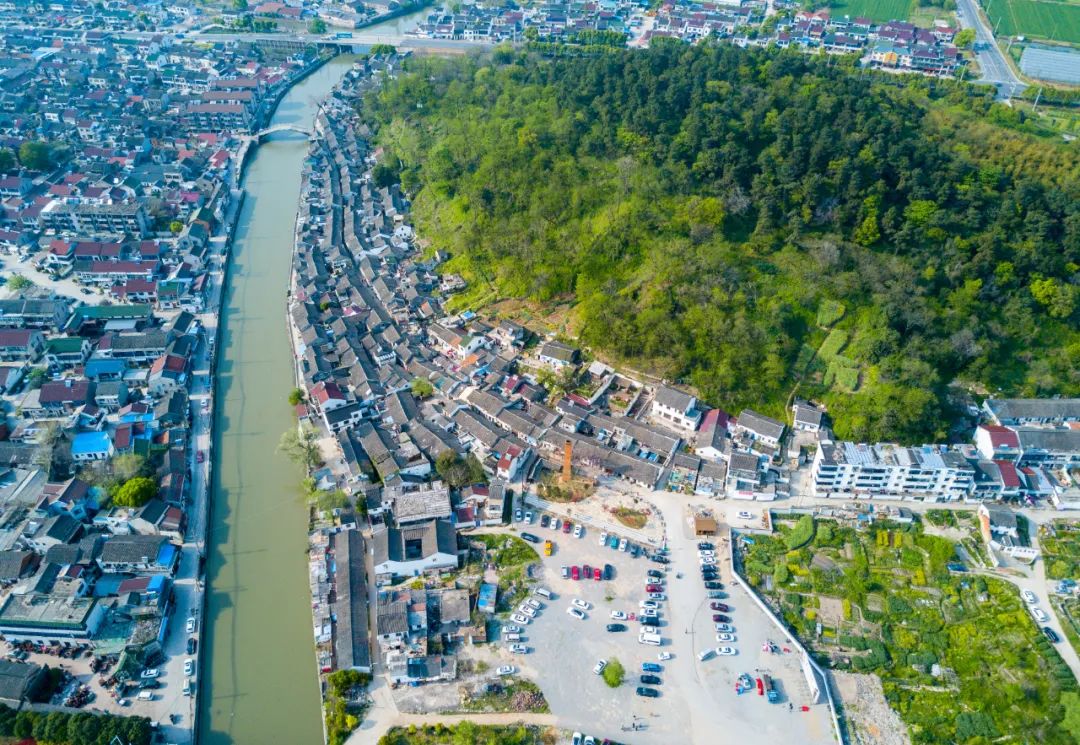
示范工程引导下居民的自发营建
Houses transformed by residents under the guidance of demonstration projects
过去二十年,设计团队与当地政府和居民的共同努力,成功地找到了中国历史文化街区保护与更新的特色方法。通过示范工程的引导,街区在悄然发生着变化。更多的年轻人返回古南街的祖宅开展自己的事业,更多的自发活动在古南街展开,是这项工作成功的重要标志,是对本项目最好的肯定。
Over the past two decades, the design team has worked with the local government and residents, to find a unique way to preserve and renew Chinese historical and cultural districts. Through the guidance of the demonstration project, the neighborhood in Gu'nan Street is quietly changing. More young people return to the ancestral home of Gunan Street to carry out their own business, and more spontaneous activities are carried out here, which is a sign of the success of this project and the best affirmation of it.
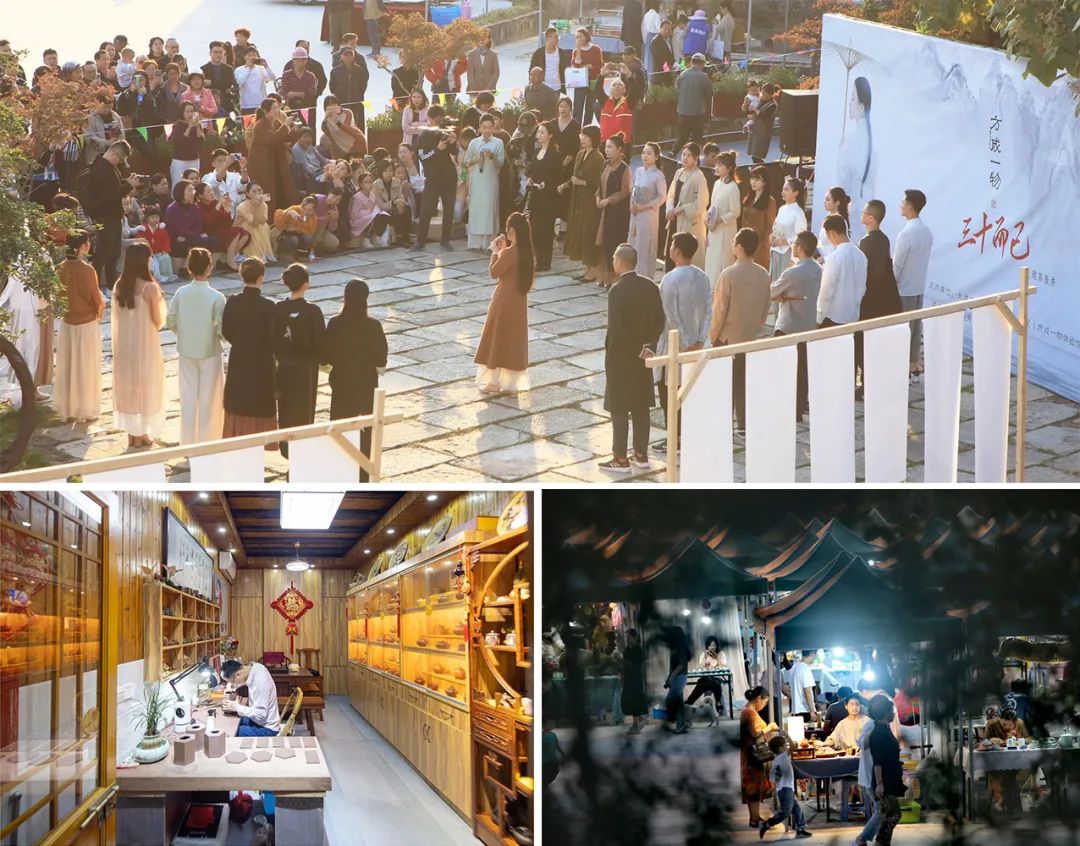
更新改造后街区内居民的生产生活与文化活动
Production, life, and cultural activities of residents in the neighborhood after the conservation



